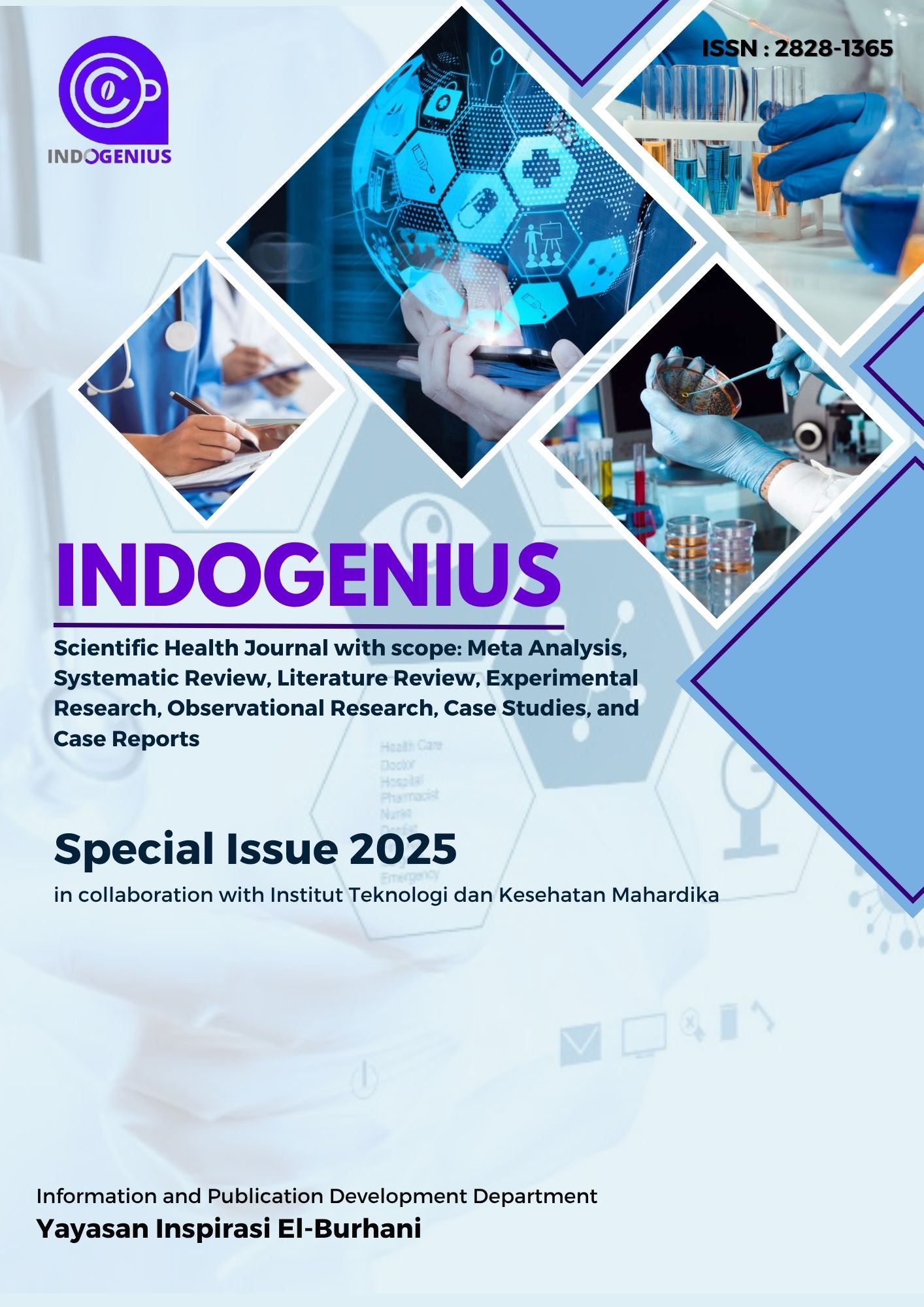Application of Range of Motion (ROM) to Overcome Physical Mobility Disorders in Non-Hemorrhagic Stroke Patients
DOI:
https://doi.org/10.56359/igj.v4i2A.713Keywords:
Non-Hemorrhagic Stroke (NHS), Range of Motion (ROM), Physical Mobility ImpairmentAbstract
Background & Objective : Ischemic stroke, also known as non-hemorrhagic stroke, is a condition in which blockage of blood vessels leads to partial or complete interruption of blood flow to the brain. This scientific paper aims to analyze nursing care with the intervention of Range of Motion (ROM) exercises in patients with non-hemorrhagic stroke who experience impaired physical mobility. Method : This paper was developed using a case study method. The subject was one patient diagnosed with non-hemorrhagic stroke who had impaired physical mobility at RSD Gunung Jati Cirebon. Data were collected through anamnesis, physical assessment, direct observation, and documentation. The nursing care process was carried out for three days. Result: On admission, the patient complained of pain and difficulty moving the left extremities. The intervention provided was mobilization support through the implementation of Evidence-Based Nursing (EBN) Range of Motion (ROM) exercises. These exercises were implemented for three consecutive days, each session lasting 20 minutes and repeated for each subject. After three days of intervention, evaluation showed improvement in the patient’s physical mobility status, increasing from a score of 3 to 4, indicating that ROM was effective for patients with impaired physical mobility. Conclusion: The application of ROM exercises proved effective in improving physical mobility in patients with non-hemorrhagic stroke. ROM can therefore be recommended as an intervention to support mobilization in stroke patients experiencing impaired mobility.
Downloads
References
Anisa, A., Karlina, N., & Syaripudin, A. (2021). The Correlation of Self Efficacy with Coping Strategies on Patients Diabetes Mellitus Type 2 Which Use Insulin in Waled Hospital of Cirebon District. Jurnal Kesehatan Mahardika, 8(1), 353263.
Anastasia Suci, Isrofah, Ni Luh Putu,Suryati, Kadek Agus, dkk (2023). Buku Ajar Pemenuhan Kebutuhan Dasar Manusia
Cindita Bela (2021). Penerapan Range Of Moution (ROM) Pasif Untuk Mengatasi Masalah Keperawatan Hambatan Mobilitas Fisik Pada Pasien Stroke Non Hemoragik Dikota Metro. Jurnal Cendikia Muda. Vol 1 (2) 216-222
Issa Alfatikah (2023). Asuhan Keperawatan Pasien Stroke Non Hemoragik Dengan Penerapan Latihan Rom Aktif Cylindrical Grif Terhadap Kelemahan Otot Ekstremitas Atas Dengan Masalah Gangguan Imobilitas Fisik Di Ruang Lantai 6 Rumah Sakit Husada Utama Surabaya. Jurnal Informasi Ilmu Kesehatan. Vol 7 (2) 70-79
Rima Fitriani (2022). Penerapan Latihan Range Of Moution (ROM) Untuk Meningkatkan Kekuatan Otot Pada Pasien Dengan Gangguan Mobilitas Fisik Akibat Stroke. JONAH ( Journal of Nursing ang Homecare) Vol 1 (2) 88-95
Vera Yuni (2024). Penerapan Range Of Moution Pada Pasien Stroke Non Hemoragik Dengan Gangguan Mobilitas Fisik. Jurnal Manajemen Asuhan Keperawatan. Vol 8 (1) 18-24
Kusumawaty, J., & Nurapandi, A. (2022). Edukasi Dan Mobilisasi (ROM) pada Lansia Penderita Stroke dengan Audio Visual di Panti Jompo Welas Asih Tasikmalaya. Kolaborasi: Jurnal Pengabdian Masyarakat, 2(1), 45-51.
Downloads
Published
How to Cite
Issue
Section
License
Copyright (c) 2025 Ahmad Syarifudin, Trengginas Aji Satrio

This work is licensed under a Creative Commons Attribution 4.0 International License.

















